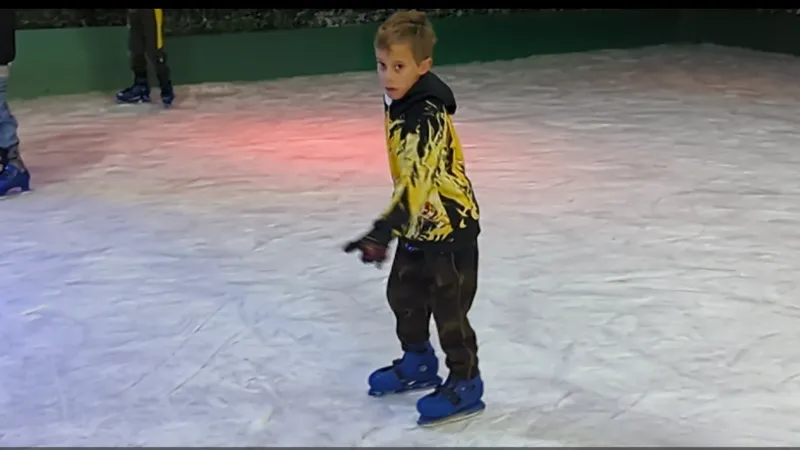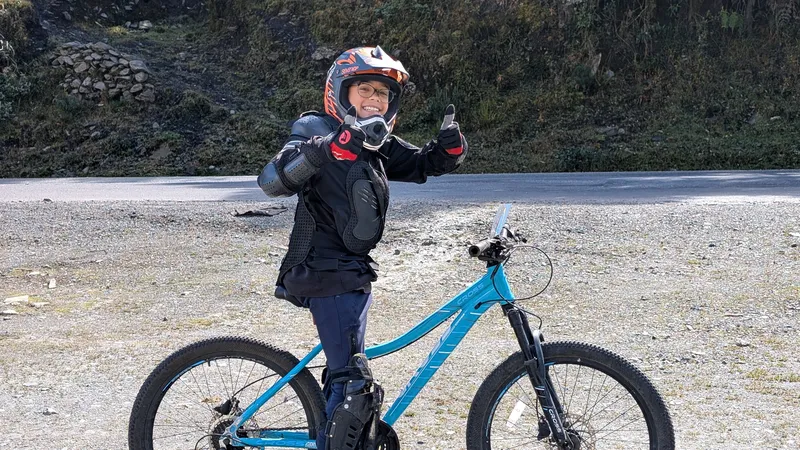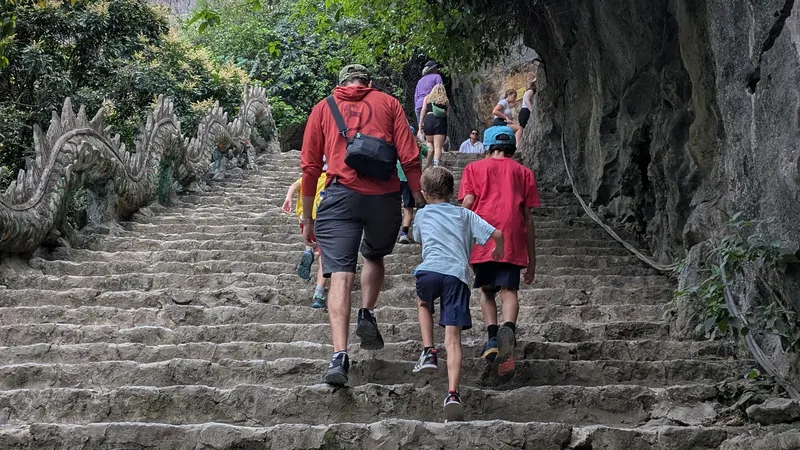The happenings of Friday February 21, 2025 to Saturday February 22, 2025 in Mumbai, India
Mumbai is one of the most densely populated cities in the world with over 22 million people. The city is built up with mansions, high rises, and slums interspersed like a strange hodgepodge. Our tour guide Abbass explained that many people choose to stay in the slums, especially the fishing communities, rather than leave for better housing even when they can afford to do so. The streets are incredibly crowded with cars, scooters, bicyclists, pedestrians, and animals. Street vendors of all varieties litter the sidewalks with their goods. The polluted air weighs heavily on the people out and about. It is a thriving, bustling, diverse, magical, amazing, and very dirty city. Often, walking down a sidewalk required walking into the busy street traffic to navigate around parked vehicles and wagon carts.
We had just left our less-than-ideal hotel for Chabad when we walked past one of the hotel recommendations we received for a different accommodation option. I noted that I would stop there on our way back from dinner to ask if they had openings.
We found the Chabad House tucked inside a side street and across an enormous mural acknowledging the murder of over 170 people in 2008 when ten men belonging to a Pakistani terrorist organization attacked Mumbai from November 26-November 28. Three locations had been selected for the assault, one including the Chabad House. The mural incorporated the bullet holes that can still be seen today and is the only public mural acknowledging the event. Rabbi Gavriel Holtzberg and his wife, Rivka Holtzberg, the Chabad shluchim/emissaries to Mumbai at the time were among the victims. They were in their twenties and their tragic deaths devastated the global Jewish community worldwide when we heard the news. Thankfully, the boys did not notice the mural. I knew we would end up talking about what happened but wasn’t mentally prepared to discuss it right then. Best to leave these discussions to daylight hours.
We entered the Chabad House and discovered children! The boys were elated to have new playmates to hang out with over Shabbat and, as it turned out, Rabbi Yisroel Kozlovsky was just as joyous for his children to have playmates. As we’d grown accustomed to hearing, not many Jewish families with younger children are traipsing around the world visiting Chabad Houses or synagogues. Rabbi Kozlovsky greeted us with a big smile that made us feel instantly welcomed. I relaxed a bit knowing the kids wouldn’t be bored.
As davening started a group of young adults walked in, obviously part of some kind of exchange program or Jewish program. Later I learned these students were part of the Columbia University and Tel Aviv University partner program and were participating in a program run by Jacob Sztokman the founder of Gabriel’s Project Mumbai. Suddenly, I realized I recognized one of the students. A fourth unexpected JDS run-in! This time we had run into a student who was in the middle school when I was a principal there. “What are the odds?!?” I asked myself. We hadn’t seen each other in years, and I didn’t expect her to remember me because our paths crossed so briefly. After davening I walked up to her and asked if she had gone to JDS. She had! We caught up for a few minutes and then made our way to the dining room for dinner. Of all the places to run into someone from JDS…I couldn’t believe it. The unexpected night continued when we sat with a very sweet couple from Potomac who we shared acquaintances with back home. Again, what are the odds that we would run into people we knew or could connect with halfway across the world? Then again, this is the Jewish community I’m talking about. There’s always someone who knows someone who knows someone…It’s a small world.
Dinner was delicious. The food was ample and the company grand. Rabbi Kozlovsky asked Jacob to share his story with all of us. We learned that Jacob used to visit India often and would frequent the Chabad House when Rabbi Gavriel Holtzberg and his wife were alive. One of the greatest challenges he wanted to solve was the lack of education provided to children living in remote villages and in the slums. He explained that many of people in these villages do not know the importance of washing hands with soap and water, how to use a western toilet (most don’t even have a squat toilet to use), and children were dying due to unsanitary conditions. After Rabbi and Rivka Holzberg were murdered, Jacob made it his life’s mission to start Gabriel’s Project Mumbai in their memory to address the problem that kept him up at night. The students in the room were there to learn more about the project and conditions.
Later, Rabbi Kozlovsky gave a d’var Torah/sermon to frame both the pain of tragedy—mourning the recent murder of Kfir and Ariel Bibas and Ohad Lifshitz (we had not yet learned about Shiri Bibas’s fate) —and the profound importance of creating joyful spaces whenever and wherever we can. It was heavy, hopeful, and deeply grounded in faith. The entire evening was a lesson in balancing complicated and rivaling emotions as life marches forward.
Much later than expected, we walked home. As promised, I stopped inside the hotel we had passed earlier in the evening. Chaim and the boys waited for me while I marched into the hotel to ask if they had rooms for the following night that could accommodate our family. I was not beyond begging and willing to take anything just to avoid sleeping in our current hotel more than one night. After several tense moments, the hotel manager said he was able to find two rooms. They were a bit more expensive than we had hoped for, but I grabbed them without hesitating. I told him I didn’t have cash or credit card, but I promised we would be back later the following day. Gratefully, he accepted this without question and booked the rooms for us. Feeling much better about our situation, we returned to our hotel.
I slept TERRIBLY. For no particular reason, I was up from 2-4AM and felt like I had been sleeping on a cinderblock or wooden plank. Actually, a wooden plank is fairly accurate. My upper back was so stiff and in so much pain. Eitan and Matanel woke up before 7:30AM and, thankfully, played nicely together while I attempted to sleep. We walked back to the Chabad House long before minyan was scheduled to start, probably because we just needed to get not be in our hotel. Although there was another shul we could have gone to, we decided to return to the Chabad House because dinner had been so enjoyable.
While we waited for a minyan to gather, we met Tzion, a Baghdadi Jew whose family had been in India for 2000 years. He brought the boys babka and fresh cut vegetables to snack on, which was amazingly helpful because we hadn’t had any breakfast. Tzion taught us how to sing the Hebrew song Kol HaOlam Kulo in Hindi. The boys picked up the words so quickly while I felt like I was tripping over my tongue. Eventually other tourists, along with the student group, arrived and we started davening.
During lunch I took the opportunity to speak to Jacob to learn more about his organization and the work they were doing. I shared what I learned with Chaim and the boys. We all agreed that Gabriel’s Project Mumbai was the perfect organization for us to donate as part of our commitment to contributing positively to the areas we visited. By the end of lunch, Jacob invited our family and a few other guests to join him and the student group for a short tour.
The tour began with a visit to the top floor of the Chabad House where a memorial stood memorializing the Mumbai terrorist attacks. Other than the mural outside, this was the only memorial of the attack in the entire city. Putting up a memorial meant acknowledging what happened and no one else was ready to do so. Leave it to the Jews to know how to grieve and mourn tragedy.
We then walked downstairs one floor to visit the guest rooms and the Holzberg’s family apartment. We could see the bullet holes, an RPG hole from Indian Commandos trying to stop the attackers, and the Holzberg’s two-year-old son’s room. Moishe, was the lone survivor, saved by his nanny who then moved with him to Israel and never left his side. Moishe’s room was still decorated with children’s items. Bullet holes could be seen just above the crib. It is a miracle he and his nanny survived. Jacob took the time to explain that the Chabad House was only included in the terrorists’ targets because they were Jews and “Jews are worth ten times as much as anyone else.” What we were witnessing felt like a fraction of what I imagined we would have witnessed in the small Israeli communities pillaged by Hamas on October 7. I almost lost it. When we left Moishe’s room, Jacob drew our attention to the blueprints set up in the other rooms. Rabbi Kozlovsky has plans to turn the apartment into a museum to teach more about who the Holzbergs were and the events of the attack.
The rest of our tour was much lighter, which was a relief because I wasn’t sure how much more I could take – the boys were moved by the stories, but enough of it went over the little ones’ heads that I wasn’t worried about them internalizing much of it.
We walked past India Gate, which was built to commemorate British King George V’s first landing in India and his wife Mary of Teck. They never ended up visiting India after its construction, but it was a nice gesture. It became a symbol of Indian independence as it was the last spot from where British troops were seen leaving India in India.
From there we visited Knesset Eliyahoo, a Baghdadi shul that was built in the 19th century. It was beautiful, recently restored to its original colors of light blue, gold leaf, and dark blue filigree. We met some of the people who daven there, including one of the top ten eligible bachelors of India! Jacob explained that in India there is somewhat of a rivalry between the Baghdadi Jews and Bene Israel Jews. According to what he learned, the Bene Israel community descended from Jewish men who were shipwrecked and stranded in India centuries ago. Out of desperation to continue their lineage they married non-Jews but continued practicing Judaism. Others believe they were part of the ten lost tribes. Although the rabbinate accepted them as Jews, not all Baghdadi Jews accepted the Bene Israel as members of the Jewish community. Fascinating.
Our last stop was a free art gallery with rotating art exhibits every two weeks. It is such a coveted space that artists pay to have their work shown and man the exhibit to speak about their art. The boys really enjoyed the exhibits.
We parted ways with the group, much to our children’s dismay. They had grown attached to a few of the students and had been bathing in their attention. We hoped to run into them again.
That evening we moved hotels. What a relief! I knew I would sleep much better. That night I took the best shower I’d taken in all of India. Hot with great water pressure, no bugs and no toilet seat right next to me. I passed out and slept like a baby.


